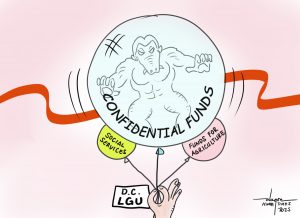Yesterday, December 19, 2019, the decision in the decade-long Ampatuan Massacre Case was promulgated by the Regional Trial Court, presided over by Hon. Jocelyn Solis-Reyes, specially designated to hear and try the case and I expect that “internet lawyers” will be all over this, interpreting, speculating and making conclusions about it one way or the other.
Because of the possibility of getting interpretations and conclusions going awry from people who think they know the law, I decided to explain some basic issues and questions about the decision and possible consequences.
As a caveat, I would like to be clear that I have not yet read the decision and what I will be saying will just be based on the dispositive portion of the case that was read on television.
First, on this very thing, what is the “dispositive portion” of a decision and what was the hullabaloo about not reading the entire decision?
It is called the “dispositive portion” of the decision because it is where the judge states how the case is “disposed of”. In layman’s terms, after discussing the charges and the evidence presented by the parties to a case in the “body” of a decision, it is in the “dispositive portion” where the judge actually states the “judgment” in the case, where those who are found guilty or innocent are named, what penalties will be imposed and who, and for how much, will be liable for the award of damages in favor of the complainants.
The usual, or regular, manner of promulgating a decision in a criminal case is to read the ENTIRE DECISION, from the title to the dispositive portion and everything in between. It is allowed, however, for the accused to waive the reading of the body of the decision so that only the dispositive portion will be read.
Why? Simply because if the decision is long, it will take a long time to finish reading it and, anyway, in case of conviction, the lawyers of the accused will have all the time to go over the details of the decision to prepare a motion for reconsideration, or appeal, because they will all be given copies of the decision immediately after promulgation. In this case, the judge already said that the decision is 735 pages long and we would have been waiting until tomorrow if the entire thing was read.
This is something that is ordinary and happens everyday in court. So, what was the big deal about it in this case? The prosecution wanted some parts, the “salient portions”, of the decision to be read before the dispositive portion because they wanted the viewing public to have an idea of the reasons why the judge decided the case as stated in the dispositive portion. In other words, it became an issue only because of the public interest in the case.
This was addressed because there was a statement, I cannot remember from whom, that the decision, in its entirety, would be published in the Supreme Court website immediately after the promulgation. Thus, those interested in the details could go over it to their heart’s content.
Second, does this end the case? I must say “Yes and No”.
For those who were convicted, they still have available remedies. They may choose to file a motion for reconsideration, which means they will try to convince the judge that the decision was wrong in convicting them, or they can appeal the decision by filing a notice of appeal.
I would like to be clear that the appeal will be to the Court of Appeals. I’m saying this because I heard a commentator, or maybe it was a lawyer, say on air that the appeal will be to the Supreme Court because the penalty was reclusion perpetua and this is wrong. The only regular appeal that used to automatically go directly to the Supreme Court was when the RTC would impose the death penalty and even that was changed when the Supreme Court introduced an “intermediate appeal” in such cases that would first go to the Court of Appeals in the case of Efren Mateo vs. Garcia in 2004.
From the Court of Appeals, if the conviction is affirmed, the accused can still appeal to the Supreme Court, which will be the final arbiter of such cases.
For those who are “AT LARGE” or the 80 or so accused who have not yet been arrested and arraigned, the case goes on because they still have outstanding warrants for their arrest and, when arrested, another trial will be conducted as to them.
However, for those who were acquitted, this is the end of the case because an acquittal is immediately executory, meaning it is effective immediately and CANNOT be appealed through an ordinary appeal. This is because an appeal from an acquittal will violate the constitutional right of the accused against double jeopardy. Simply put, once acquitted an accused cannot be placed in danger of conviction for the same crime again which would be the case if an appeal would be allowed from the acquittal.
If the complainants are not agreeable with the acquittal, they can still appeal the decision but ONLY as to the civil liability. This means that the complainants can still ask the higher courts to hold the acquitted accused liable for damages but they cannot anymore be placed in any danger of any further penalty of imprisonment anymore.
Finally, how come some accused were convicted but some were acquitted?
Criminal cases with multiple accused, particularly cases like this where there were even multiple victims, are not decided wholesale. It is not a “one for all and all for one” situation.
It must be remembered that to justify a conviction, the accused must be found guilty “BEYOND REASONABLE DOUBT”. This is the highest degree of evidence that can be required in any kind of case because it requires “MORAL CERTAINTY.” The easiest way I can explain this is to say that the judge must be so convinced by the evidence that the accused is guilty of the offense charged that the judge could easily sleep soundly at night after sentencing the accused to imprisonment.
In this light, it is possible that the evidence presented was enough to convince judge of the guilt of some of the accused but not the rest. Thus, some were convicted while others were acquitted.
In relation to this, it must be emphasized that part of the allegations in the case was that the accused were “in conspiracy” with each other. This means that the accused planned the manner and execution of the killing. To prove this, the evidence of the conspiracy must also be established beyond reasonable doubt. So, there may have been accused who were charged with having participated in the conspiracy but the evidence failed to substantiate it and these accused were, thus, acquitted.
We must remember that in the absence of proof of guilt beyond reasonable doubt, the Constitution dictates that the accused is ENTITLED TO AN ACQUITTAL.
In ending, I would like to state that, at the very least, the promulgation of the decision in this case has provided some sort of closure even if it has come around a decade after this horrendous crime.
For my fellow lawyers who fell victim to the violence, Atty. Connie Brizuela and Atty. Cynthia Oquendo, may their souls find some peace in that the law they believed in has taken its course.


